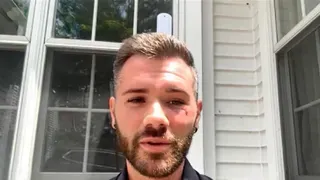September 10, 2020
Obamacare Co-Ops Down From 23 to Final '3 Little Miracles'
Phil Galewitz READ TIME: 6 MIN.
New Mexico Health Connections' decision to close at year's end will leave just three of the 23 nonprofit health insurance co-ops that sprang from the Affordable Care Act.
One co-op serves customers in Maine, another in Wisconsin, and the third operates in Idaho and Montana and will move into Wyoming next year. All made money in 2019 after having survived several rocky years, according to data filed with the National Association of Insurance Commissioners.
They are also all in line to receive tens of millions of dollars from the federal government under an April Supreme Court ruling that said the government inappropriately withheld billions from insurers meant to help cushion losses from 2014 through 2016, the first three years of the ACA marketplaces. While those payments were intended to help any insurers losing money, it was vitally important to the co-ops because they had the least financial backing.
Lauded as a way to boost competition among insurers and hold down prices on the Obamacare exchanges, the co-ops had more than 1 million people enrolled in 26 states at their peak in 2015. Today, they cover about 128,000 people, just 1% of the 11 million Obamacare enrollees who get coverage through the exchanges.
The nonprofit organizations were a last-minute addition to the 2010 health law to satisfy Democratic lawmakers who had failed to secure a public option health plan – one set up and run by the government – on the marketplaces. Congress provided $2 billion in startup loans. But nearly all the co-ops struggled to compete with established carriers, which already had more money and recognized brands.
State insurance officials and health experts are hopeful the last three co-ops will survive.
"These are the three little miracles," said Sabrina Corlette, a research professor and co-director of the Center on Health Insurance Reforms at Georgetown University, in Washington, D.C.
Maine Aided in Supreme Court Victory
The Maine co-op, Community Health Options, helped bring competition to the state's market, which has had trouble at times attracting insurance carriers, said Eric Cioppa, who heads the state's bureau of insurance.
"The plan has added a level of stability and has been a positive for Maine," he said.
The co-op has about 28,000 members – down from about 75,000 in 2015 – and is building up its financial reserves, Cioppa said. Community Health Options is one of three insurers in the Obamacare marketplace in Maine, the minimum number experts say is needed to ensure vibrant competition.
Kevin Lewis, CEO of the plan, attributed its survival to several factors, including an initial profit in 2014, the year the ACA marketplaces opened, that put the plan on a secure footing before several years of losses. He also credited bringing most functions of the health plan in-house rather than contracting out, diversifying to sell plans to small and large employers, and securing lower rates from two health systems during a couple of difficult years.
Jay Gould, 60, a member who offers the plan to workers at his small grocery in Clinton, has been happy with the plan. "They have great customer service, and it's good to know when I am talking to someone that they are from Maine," he said.
Central Aroostook Association, a Presque Isle nonprofit that helps children with intellectual disabilities, switched to the co-op last year to save 20% on its health premiums, said administrator Tammi Easler. Having a Maine insurer means any issues can be dealt with quickly, she said. "They are readily available, and I never have to wait on hold for an hour."
The co-op, which made a $25 million profit each of the past two years, has proposed dropping its average premiums by about 14% in 2021, Lewis said.
Community Health was one of the lead plaintiffs in the case before the Supreme Court and expects to get $59 million in back payments from the settlement.
The federal decision to suspend those so-called risk corridor payments – designed to help health plans recover some of their losses – was one of the factors that caused many of the co-ops to fail, Corlette said. Republican critics of the ACA, however, blame poor management by the plans and lack of oversight by the Obama administration.
Insurers are in talks with the Trump administration about whether the $13 billion due the carriers must be added to their 2020 balance sheet or could be counted toward operations from prior years. This year, insurers are generally banking large profits since many people have delayed non-urgent care because of the COVID-19 pandemic. Since the ACA limits insurers' profit margins, adding that federal windfall to this year's ledger might mean many insurers would have to pay out most of the money to their consumers. If the money is applied to earlier years, the insurers could likely keep more of it to add to their reserves.
Too Much Competition in New Mexico
The Supreme Court ruling came too late for New Mexico Health Connections, which lost nearly $60 million from 2015 to 2017. The co-op would have received $43 million in overdue payments, but, in an effort to raise needed cash, it sold that debt to another insurer in 2017 for a much smaller amount.
Marlene Baca, CEO of the co-op, which made a $439,000 profit in 2019, said its goal of bringing competition into the market was achieved, since five other companies will be enrolling customers this fall for 2021. Yet, that competition eventually led to the plan's decision to end operations, announced last month.
With only 14,000 members, it made no sense to continue operating due to high fixed administrative costs, she said. Her plan was also hurt by the slumping economy this year, which pushed many state residents out of work and made more than 3,000 members eligible for Medicaid, the state-federal health program for the poor.
"We did our very best," Baca said, noting that her company is closing with enough money to pay its outstanding health claims. Many other co-ops that shuttered were closed out by their states and unable to meet all their debts to health providers, she said.
Montana's Co-Op Is Expanding
The Mountain Health Co-Op, with about 32,000 members, has just two competitors in its home state of Montana and four in Idaho.
A big factor behind its survival was that the plan received a $15 million loan in 2016 from St. Luke's Health System, Idaho's largest hospital provider, said CEO Richard Miltenberger. Although he wasn't working for the co-op at that time, Miltenberger said, it is his understanding that the hospital wanted to help maintain competition in that marketplace.
The co-op is expecting $57 million from the Supreme Court victory.
"We are in excellent shape," Miltenberger said. The plan, which paid back the St. Luke's loan and made a $15 million profit in 2019, added vision benefits this year and is offering a dental exam benefit for next year. It's also providing most insulin and medications for asthma and chronic obstructive pulmonary disease to members without any copayment to help ensure compliance.
The insurer is moving into Wyoming for 2021, which will end the Blue Cross plan monopoly in that state's Obamacare marketplace, he said.
Wisconsin's Mystery Donor
Wisconsin's Common Ground Healthcare Cooperative was on the verge of ending operations in 2016 when it received a lifesaving $30 million loan, said CEO Cathy Mahaffey. The insurer has refused to identify the benefactor other than to say it was not a person or company doing business with the plan.
In 2018, Common Ground was the only health plan in seven northeastern Wisconsin counties, she said. Today, the co-op has about 54,000 members and faces competition from two to five carriers in the 20 counties where it operates.
Common Ground, which recorded a $73 million profit last year, expects to receive about $95 million from the Supreme Court case victory.
Wisconsin's decision not to expand Medicaid under the health law has benefited the co-op because people with incomes from 100% to 138% of the federal poverty level ($12,760 to $17,609 for an individual) are ineligible for Medicaid and must stay with marketplace plans for coverage. In states that expanded Medicaid, everyone with incomes under 138% of the poverty level is eligible.
Another factor was its decision in 2016 to eliminate the broad provider network offering and sell a plan offering only a narrow network of doctors and hospitals, allowing it to benefit from lower rates from its providers, according to Mahaffey.
"We are very strong financially," she said.
Subscribe to KHN's free Morning Briefing.






